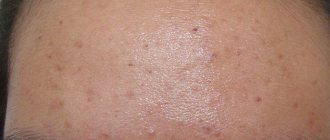What is salicylic acid
This substance is from a group of compounds called salicylates. Salicylic acid is a type of phenolic acid and beta-hydroxy acid and is in the same class of drugs as aspirin, although it is used differently.
Salicylic acid is colorless and odorless. The structure allows it to be oil soluble, which means it can penetrate the lipid layers of the skin. Salicylic acid is considered a keratolytic because it clears bacteria and oil from pores that can cause clogged pores, causing blackheads and pimples. Salicylic acid is able to break the bonds between epidermal cells, acting as a natural exfoliant that removes the stratum corneum of the skin, making its surface smoother.
Indications for combating skin problems
Salicylic alcohol is prescribed for the following conditions:
- acne, post-acne;
- black dots;
- infectious rashes;
- oily seborrhea;
- hyperkeratosis;
- chronic eczema;
- warts;
- calluses and corns.
In cosmetology, salicylic acid is known as an anti-acne agent. It copes with the root causes of acne - excess sebum production, clogging of pores with keratinized epithelial cells. The complex action of the alcohol composition allows it to be used to eliminate acne vulgaris, open comedones, red and even white pimples (closed comedones).
Skin exfoliation
While other antiseptics may only kill bacteria that cause acne and other problems, salicylic acid is one of the best products for removing dead skin cells and smoothing the skin. As a type of keratolytic, it has the ability to improve skin texture by exfoliating, reducing roughness and stimulating cell turnover. We have already talked about how to exfoliate with salicylic acid.
Lotion
More often, the medicine is used as part of masks and lotions in order to achieve maximum effect when interacting with other ingredients. You can prepare such a remedy yourself. All the necessary components are easy to find at the pharmacy and are low cost. Here are some examples of preparing such products:
Option 1:
- You will need 130 ml of chamomile decoction, 2 ml of grape oil and 5 ml of salicylic liquid.
- Add the remaining ingredients to the cooled, strained chamomile decoction and mix well.
- For convenience, pour the entire composition into a bottle with a spray or dispenser.
- Apply the lotion to a cotton pad and wipe the surface of your face with it several times a day.
- If there are only a few spots or areas of inflammation, then it is better to apply a compress to these places.
Option 2:
- To create an anti-inflammatory lotion, you need to take half a glass of salicylic alcohol.
- Pour one tablespoon of dried calendula flowers into it.
- Let it brew for a day, then strain through gauze.
- If necessary, stir the product with clean water in the following ratio: 1 spoon of lotion per 1 glass of liquid.
- Use as a facial toner.
Option 3:
- This recipe is better for sensitive skin. You need to buy 5 tablets of chloramphenicol at the pharmacy; they must be crushed into powder.
- Mix it with boric alcohol, sulfur and salicylic acid. You need 1 teaspoon of each ingredient.
- Add a glass of 70% alcohol and stir thoroughly.
- Shake the product before use.
- Apply drop by drop to affected areas of skin.
Treatment of warts
When applied as a cream, ointment, lotion, or patch, salicylic acid can help remove warts by exfoliating the skin and promoting the growth of healthy skin cells. Experts recommend starting treatment for warts with medications containing salicylic acid. They have minimal side effects, are sold without a prescription and are inexpensive. Products containing salicylic acid should not be used on genital and anal warts, as well as growths from which hair grows.
In what form is it produced?
In pharmacies, salicylic acid is found in the following dosage forms:
- in the form of a 1% and 2% solution in dark-colored bottles, packaged in 25, 40 and 80 ml;
- alcohol solution 1.2, 3, 5 and 10 percent in the same bottles;
- containing 1% petroleum jelly, in tubes of 30 ml;
- as a composition of 2% salicylic ointment in dark-colored jars or tubes of 25 g;
- in salicylic-zinc paste (Lassara paste), jars of 30 g;
- in powder form, packaged in sachets of 10, 25 and 50 g.
- as a component in various cosmetic products and procedures.
Side effects
Can salicylic acid be harmful to certain skin types? Alas, yes. If you have sensitive skin prone to dryness and redness, this product will not be the best choice, especially for frequent use.
Salicylic acid may cause side effects (especially when first used), including irritation, dryness, itching, peeling and redness. Such complications most often occur with excessive use or application to large areas of skin.
Salicylic acid products are not recommended for pregnant women or anyone taking blood thinning medications. Products containing salicylic acid should also not be applied to the mucous membranes of the mouth, eyes, damaged skin, or moles.
Contraindications and possible harm
Salicylic acid solution is a potent composition that is not suitable for everyone. Dermatologists warn that the use of salicylic acid for acne is contraindicated in the following cases:
- the presence of open wounds;
- allergic rashes on the face;
- the first 3 days after mechanical cleaning and other traumatic procedures by a cosmetologist;
- hypersensitivity to the drug;
- period of pregnancy and lactation.
Salicylic acid acts quite aggressively, penetrates deeply into the dermis and can cause harm if used incorrectly. With home remedies based on it, it is easy to “overdo it” and get a burn instead of the promised “soft” peeling.
Signs that acid recipes are starting to harm your skin:
- constant feeling of dryness and tightness;
- persistent redness;
- the appearance of spider veins and age spots.
Similar symptoms occur more often in people with sensitive and dry skin.
How to use salicylic acid products
Currently, various salicylic acid products are available in pharmacies and cosmetic stores. This:
- Means for washing and cleansing facial skin from acne. Such products are often intended for daily use. Some dermatologists recommend looking for products that contain a mixture of different acids to achieve the best results.
- Ointments or creams that are applied pointwise to acne or the resulting spots on the skin. Look for products that contain about 2% salicylic acid. This is the optimal concentration for home care.
- Body washes. Acne can form not only on the face, but also on the back, chest, etc.
- Salicylic acid shampoo used to reduce scalp dandruff.
- Wipes and patches that are applied to the skin, including the scalp.
Most skin care products are available over the counter in concentrations ranging from 0.5% to 2% salicylic acid. Dermatologists also offer professional treatments such as salicylic acid peels. They use drugs in which the content of this substance reaches 20-30%.
Products for treating warts on thicker skin range from 17% to 40%. Such drugs must be used with caution, as side effects cannot be ruled out. Always read the instructions carefully. Treatment for warts usually takes up to 12 weeks. Some products are applied to pre-steamed skin once or twice a day for several weeks until the wart disappears. Before treatment, the skin with a wart can be rubbed with a pumice stone.
Can salicylic acid be used every day? Depending on your skin type and condition, products with this substance can be used from several times a day to several times a week. If you don't have sensitive skin and only apply a small amount (ideally along with moisturizer), you should be able to tolerate daily use. However, if you notice that your skin is becoming dry and irritated, take a break for a while.
It is best to use a small dose of the product at first and then gradually increase it as your skin gets used to it. When applying twice daily, be sure to use a gentle cleanser and moisturize your skin to help prevent excessive dryness and flaking. To avoid side effects, apply salicylic acid only to areas of the skin that are prone to pimples and acne.
Reasons for appearance
Chronic diseases or eating unhealthy foods, large amounts of fried and fatty foods can affect the appearance of redness. When inflammation occurs, it becomes red and inflamed, and pustular formations or boils may occur.
Common reasons:
- Hormonal imbalance in the body, when the number of formations increases sharply, after which the help of a dermatologist is required. It may be during the period before menopause or with an irregular menstrual cycle in a woman, when the level of steroid hormones can rise sharply.
- Improper care occurs when products that are not suitable for the type are used. Excessive use of creams and scrubs on the body and face leads to an increase in acne and blemishes. Oily skin faces the most problems, since most cosmetic products have an oily base. Blackheads can occur because the pores become clogged and cannot breathe. In this case, you need to use creams with a moisturizing effect and light mattifying agents.
- If the metabolism in the body is disturbed due to poor nutrition, it is worth reviewing the diet, increasing the intake of vitamin A, and it is recommended to eat less cheese, confectionery and flour products. This includes diseases of the gastrointestinal tract, which are treated by nutritionists and dermatologists.
- Stressful situations after a hard day at work, fatigue or, conversely, overexcitement.
- Inherited genes will add to the troubles; the condition of the skin can be passed on from mother to son or daughter.
- Allergic reactions to the constituent components.
Remove blackheads, tighten pores
Among all the problems associated with the skin, enlarged pores become relevant. This is due to the difficulty of solving the problem. Basically, enlarged pores form on or near the nose, appearing as blackheads or whiteheads. In appearance, these are small holes in the skin, which spoils the appearance.
Such defects are formed due to greasy blockage of the porous surface. Each pore is the opening of a duct of the sebaceous glands, through which sebum reaches the surface, thus protecting the skin. When passing through the ducts, sebum is mixed with dead cells inside the pore and with large volumes of output, clogging occurs, and this in turn expands the pores. When a blockage occurs, the sebaceous gland continues to work and swells more, which entails an enlargement of the pore. The combination of chemical and mechanical action eliminates the problem of enlarged pores.
Your pores will become noticeably smaller if:
- After taking a shower, scrub the skin for 10-15 seconds, where the pores are enlarged. Then rinse everything off with water.
- After a shower, pat your face dry with a towel and apply a little 2% salicylic acid. Do the procedure daily for a couple of weeks.










